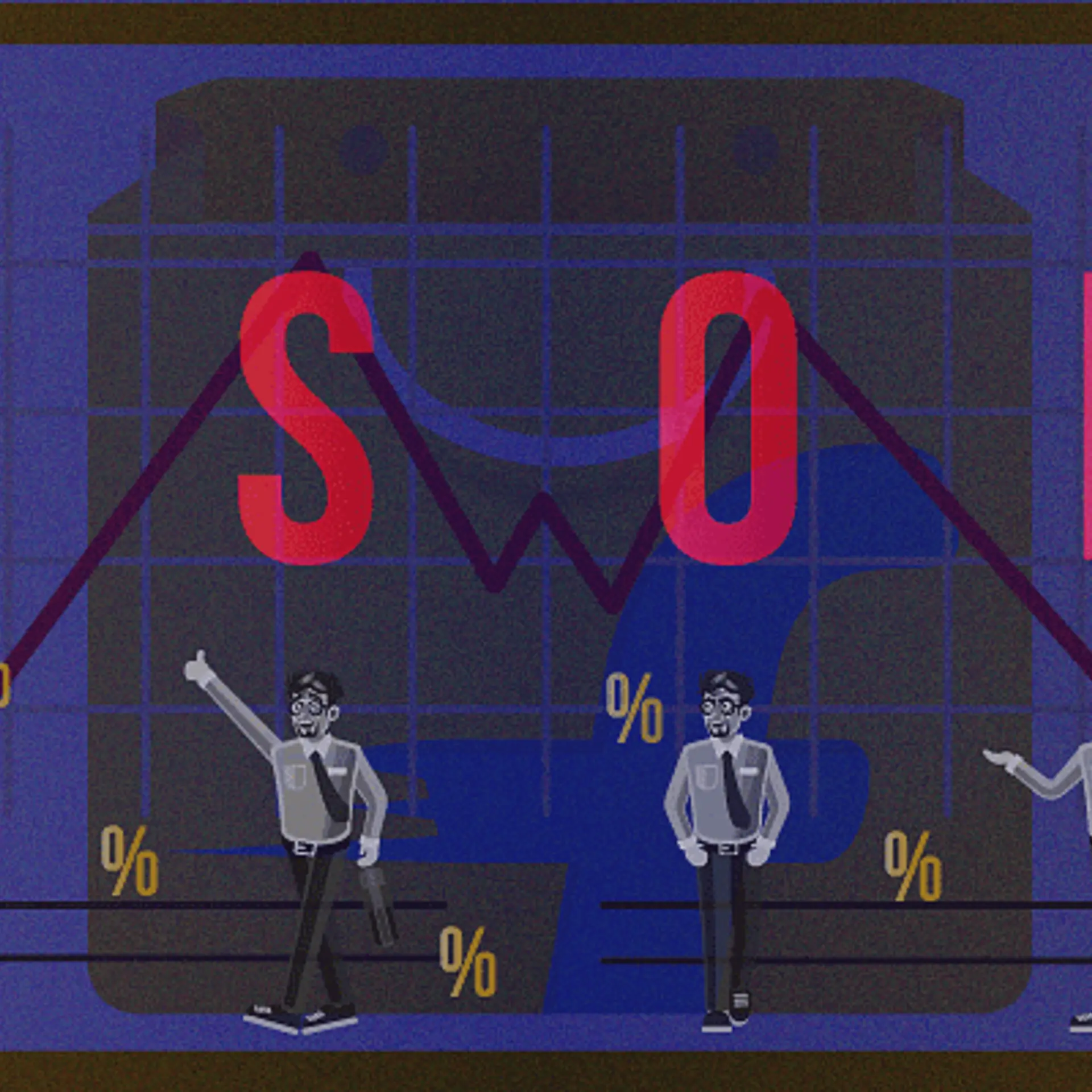Yoga, a 5000-year-old practice, still suited for the modern era
The significance of yoga, the oldest healing technique, for the modern world. These five yoga asanas could enhance the inner strength and flexibility.
Since ancient times, India has embraced yoga as an integral part of its culture and life. Asanas were considered part of daily rituals to God among many communities, to an extent that even their breathing had the discipline of pranayama. Unfortunately, today, it’s not just the land that is getting polluted, but so also people’s mind and body due to the stressful situations handled every day, food habits, behavioural and social issues like drinking and smoking.

The rate of emotional troubles such as anxiety and depression upsetting mankind has increased by 70 percent among adolescents, according to the biggest time trend study conducted in Britain. In the last 25 years, many studies reveal that the mental health of teenagers has sharply declined.
With a lot of new forms of fitness activities hitting the market, people are left confused, unable to choose the right one, suited for them. It’s important to choose a fitness routine that should make your body as well as mind fit and healthy. Yoga is a science of exercise and healing that evolved around 5,000 years ago and has still not lost its glory and relevance in today’s world. For a majority of the health and mental problems faced today, yoga could be the ultimate healer.
Some of the basic yogasanas that will enhance your health are listed below.
Adho Mukha Svanasana - downward dog pose
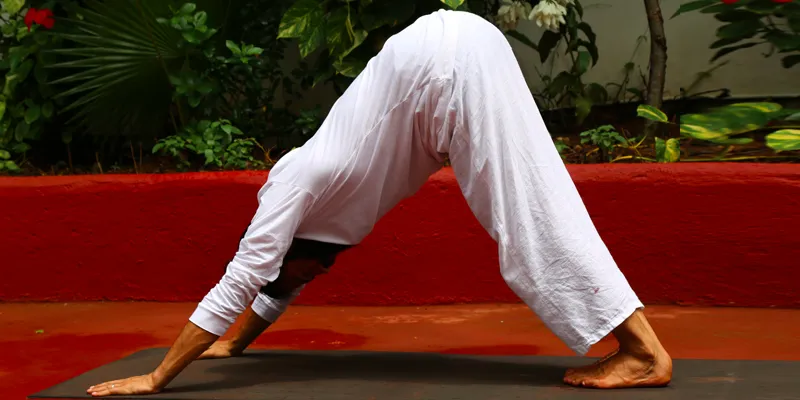
Formation of the posture
- Begin with samasthiti .
- Place palms on the floor beside your feet.
- Move both feet backwards, lifting the hips up, straightening the knees and elbows, pushing yourself into the downward dog pose thus forming an inverted V-shape.
- Now keep the hands at shoulders width apart. Toes point ahead.
- Press your hands into the ground. Widen through the shoulder blades. Keep the neck lengthened by touching the ears to the inner arms.
- Hold the position for a few seconds. Keep your eye focussed on your navel.
Breathing methodology
Exhale as you enter into this posture
Benefits
- It stretches and gives strength to your whole body.
- Helps in relieving back pain.
- It rejuvenates your body.
- Useful in headache, fatigue and insomnia.
- Tones the body muscles.
- Gives strength to your legs, feet, shoulders and arms.
- Reduce anxiety and depression.
- By this pose your body gets a 360-degree stretch.
Words of advice
Don’t perform this posture in case you have carpal tunnel syndrome; if you are suffering from diarrhea avoid this pose. During the later stages of pregnancy don’t do this asana. In case of high blood pressure or headache you can use block for supporting your head. In case of chronic or recent injury to the arms, hips, shoulders and back avoid this.
Parvathasana
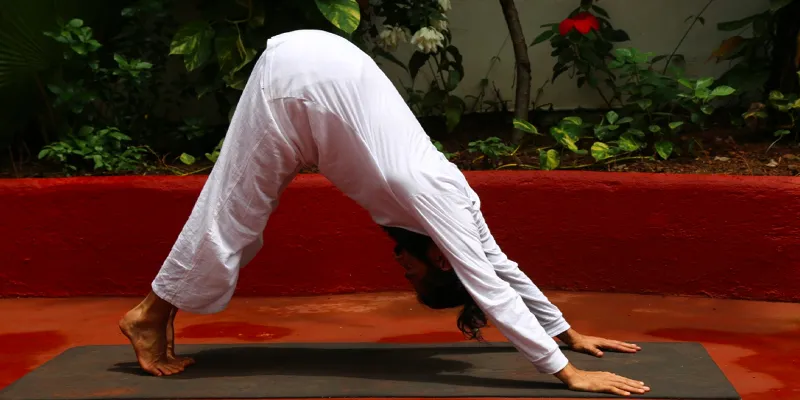
Formation of the posture
- Begin with downward dog posture.
- Slightly lean forward and lift your heels up to the sky.
- Your body weight should be distributed between your toes and palms.
- Look at your toes.
Breathing methodology
Inhale as you lift your heels up
Benefits
- Opens and stretches shoulders, spine and chest.
- Strengthens wrists, arms, shoulders and leg muscles.
- Helps to energise mind, body relieving stress and depression.
- Therapeutic for sciatica and flat feet.
- Stimulates abdominal organs.
- Improves digestion.
- Therapeutic for asthma and increases lung capacity.
- Helps to relieve the symptoms of menopause.
- Therapeutic for high blood pressure.
Words of advice
- Practitioners with shoulder or wrist injury must proceed very gently.
Koundinyasana
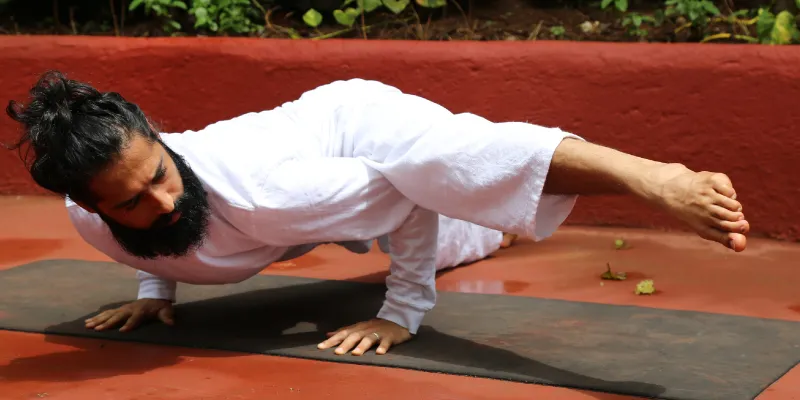
Formation of the posture
- Begin in Adhomukhi Swanasana with your hands shoulder-width apart. Bring your left foot forward, just outside of your left hand, and place it flat on the floor, bending your left knee.
- Thread your left arm underneath your left leg. Press your palm into the floor, next to your left foot.
- Bend your arms deeply. Your elbows should point straight back, and your upper arms should be parallel to the floor.
- Using your left upper arm as a shelf for your leg, slowly straighten your left leg out to the side.
- Shift your weight slightly forward.
- Keep body straight without forming curve in back.
- Repeat the same on the other side.
Breathing methodology
Inhale and assume plank and exhale as you go in Chaturanga Dandasana.
Benefits
- It helps to massage the abdominal organs and keeps them healthy as it puts pressure of the legs on the abdomen.
- It is also healthy for the spine as the spinal twist helps to strengthen and rejuvenate it.
- It is helpful in strengthening the neck and arms.
- It also helps to enhance the core sense of balance for the body.
- It helps to strengthen and stretch the leg muscles.
- It is helpful for the digestive organs as it helps them strong and healthy.
Words of advice
This pose should be avoided by those who have wrist injuries or lower back injuries or pain.
Padahastasana - standing forward bend

Formation of the posture
- Begin with Samasthithi, press your feet down on the floor and ground yourself strongly.
- Now exhale and gently bend down from the hips (not the waist) and place your chest and stomach on your thighs.
- Place palms on either side of feet.
- As a beginner, you may have to bend your knees slightly to accomplish this.
- If your knees are bent, ensure that they are straight over your toes and not opening out inwards or outwards.
- Slowly start to straighten out your legs but make sure that your chest and stomach never leave your thighs.
- Lift your hips as you straighten through your hamstring muscles all the while pressing your heels into the floor.
- Begin by holding this pose for 30 seconds and gradually work your way to one minute at a time.
Breathing methodology
As you move forward exhale deeply to touch the floor with palms.
Benefits
- Padahastasana makes the body very flexible. It stretches the back and leg muscles.
- It helps to eliminate excess belly fat.
- It improves digestion and reduces constipation. It eliminates many stomach ailments.
- It makes the spine flexible and tones the nerves.
Words of advice
- If you suffer from any type of back injury, try this pose with your knees bent.
- Avoid this pose completely if you have recently had back surgery, knee surgery or surgery to your hamstrings.
- Do not do this pose if there has been recent injury to your legs, hips, and shoulders.
- Sarvangasana

Formation of the posture
- Begin by lying down on your back.
- Lift your legs up in a 90-degree angle from the floor. Feet should be kept together.
- Slowly push your back to lift your pelvis even more. Lift your legs as much as your body allows.
- When you lift your legs furthermore, support your back with your palms in a way in which your elbows and shoulders are on the floor. Elbows should be shoulder distance apart.
- Try to bring your legs, pelvis, chest and back in one straight line. Lock your chest with your chin.
- The toes of your feet should be in line with your eyes. Look at your toes.
- Breathe normally and hold for as long as your body allows.
Breathing methodology
- Exhale and retain your breath while lifting your legs and back up.
- Breathe normally if you hold the posture for long.
- Inhale while lowering the body to the floor.
Benefits
- There is an inverse in the usual blood flow. This means that a lot of blood flows to the face. This gives a natural glow to the face and reverses the skin’s ageing process. It works as an anti-oxidant to the skin, making it look very young.
- It detoxifies the body.
- The shoulders and neck become strong and flexible.
- The back gets a good stretch and opening. It also makes the back strong.
- Pressure from the legs is released, making it feel relaxed.
Words of advice
- Sarvangasana provides many of the benefits of Sirsasana and is easier to perform.
- A person with any injury in the neck, shoulder or back should not do this asana because that is where the pressure of the entire body weight falls.
- Women should not do this asana during menstruation and advanced stages of pregnancy.
- This asana should not be practised by people suffering from enlarged thyroid, liver or spleen, cervical spondylitis, slipped disc and high blood pressure or other heart ailments
Halasana
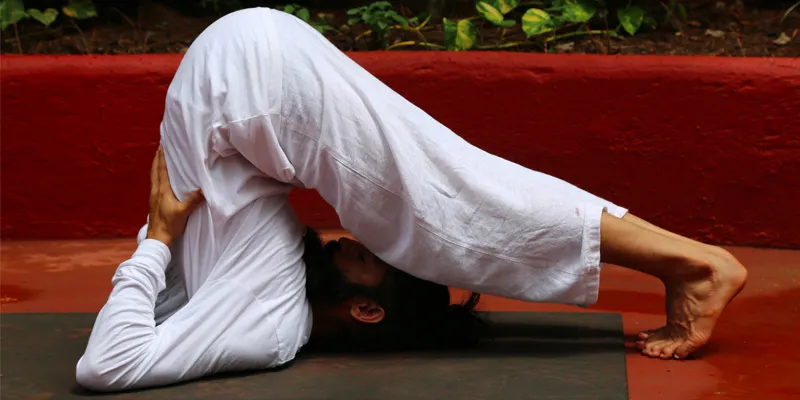
Formation of the posture
- Lie on your back.
- Using abdominal muscles with inhalation lift legs up 90 degrees.
- Press palms down and lift back away from floor (you may take support of palms).
- Take both legs behind your head.
- Put toes down on the floor.
- Neck should remain relaxed and body weight should be carried by shoulders.
- Straighten arms and place palms down.
- Hold the pose for 10 seconds.
Breathing methodology
Inhale while lifting legs and breathe slowly after you assume final position.
Benefits
- It clears constipation and stomach disorders.
- Halasana helps to reduce both belly and body fat.
- The inner organs like thyroid, kidney, spleen and pancreas are nourished well.
- It normalises high blood pressure.
- Menstrual disorders in women are cured.
- It improves memory power. Therefore, a student practicing this yoga pose regularly helps to score high marks in examination.
- With a broad shoulder and a trim waist it gives sleek look.
- As more blood flows to face, the face dazzles and is kept young.
- Muscle fibers and cervical vertebrae, thoracic vertebrae and lumbar vertebrae on the back are strengthened.
- It helps to keep your back bone flexible and strong.
Words of advice
Those having lumbago, neck pain, spondylitis and high blood pressure should not practice this yoga pose.
Yoga is a self-evolving science that survives and modifies itself to adapt to the changes faced by humanity with the passage of time.
(Disclaimer: The views and opinions expressed in this article are those of the author and do not necessarily reflect the views of YourStory.)






